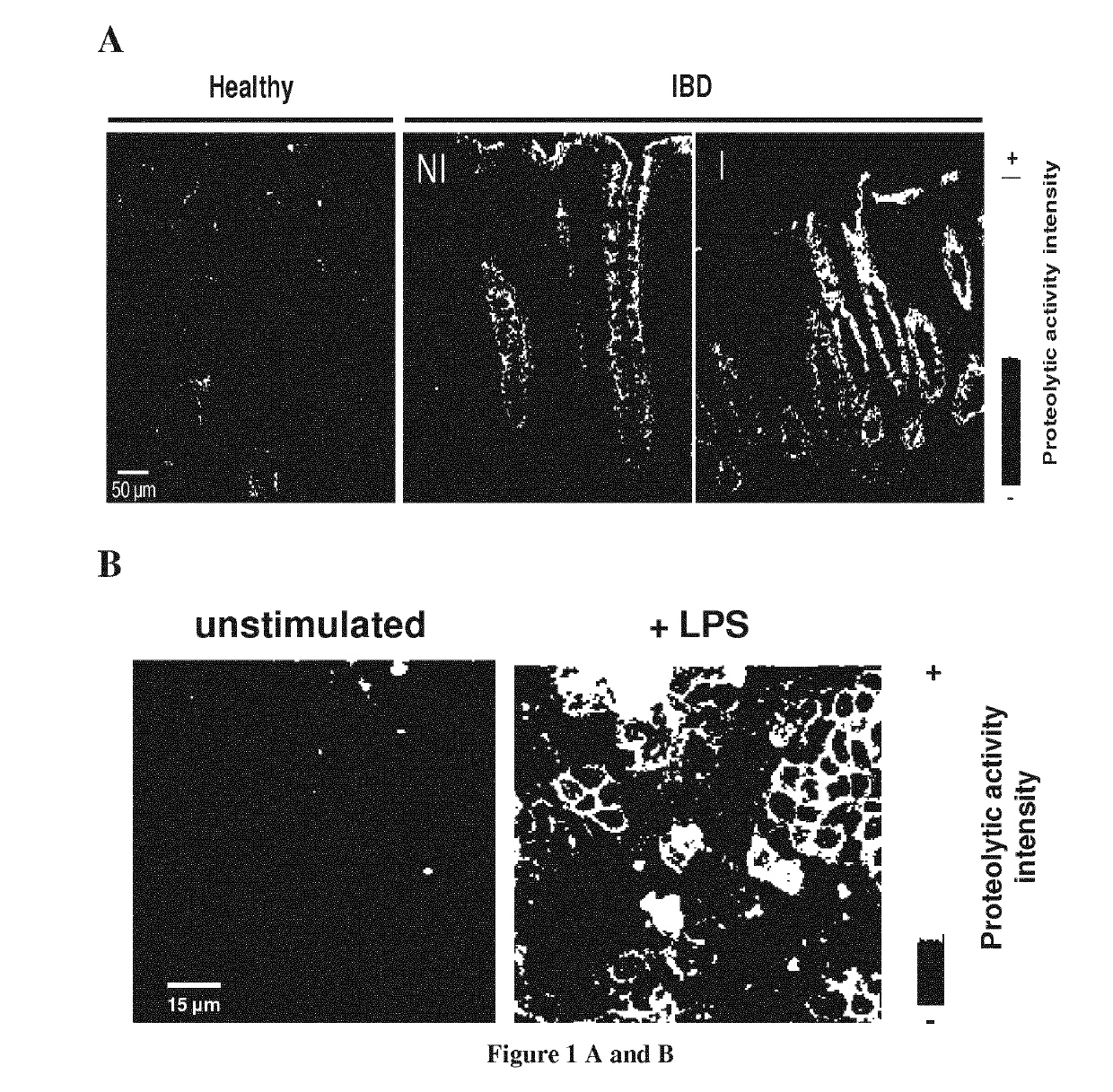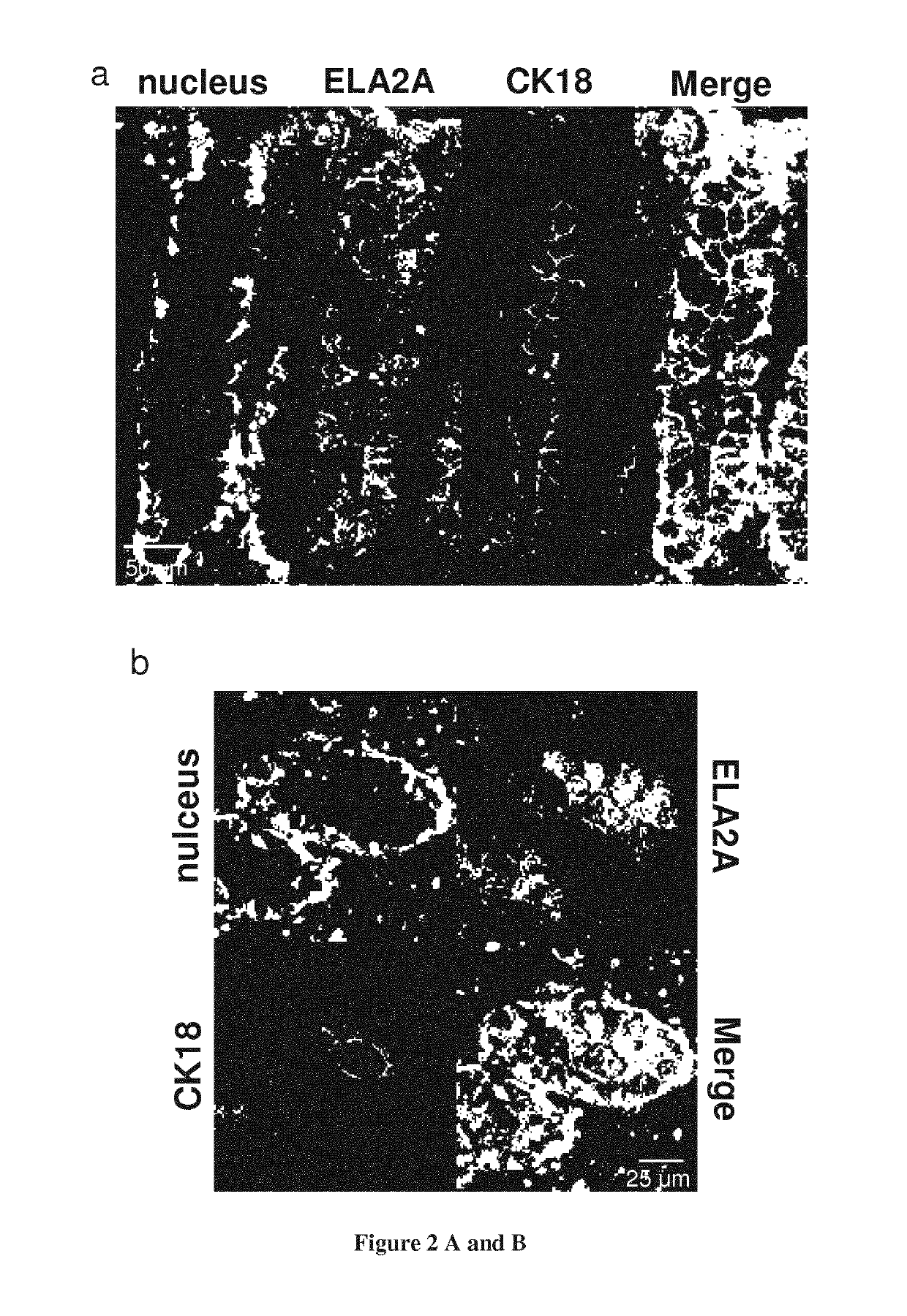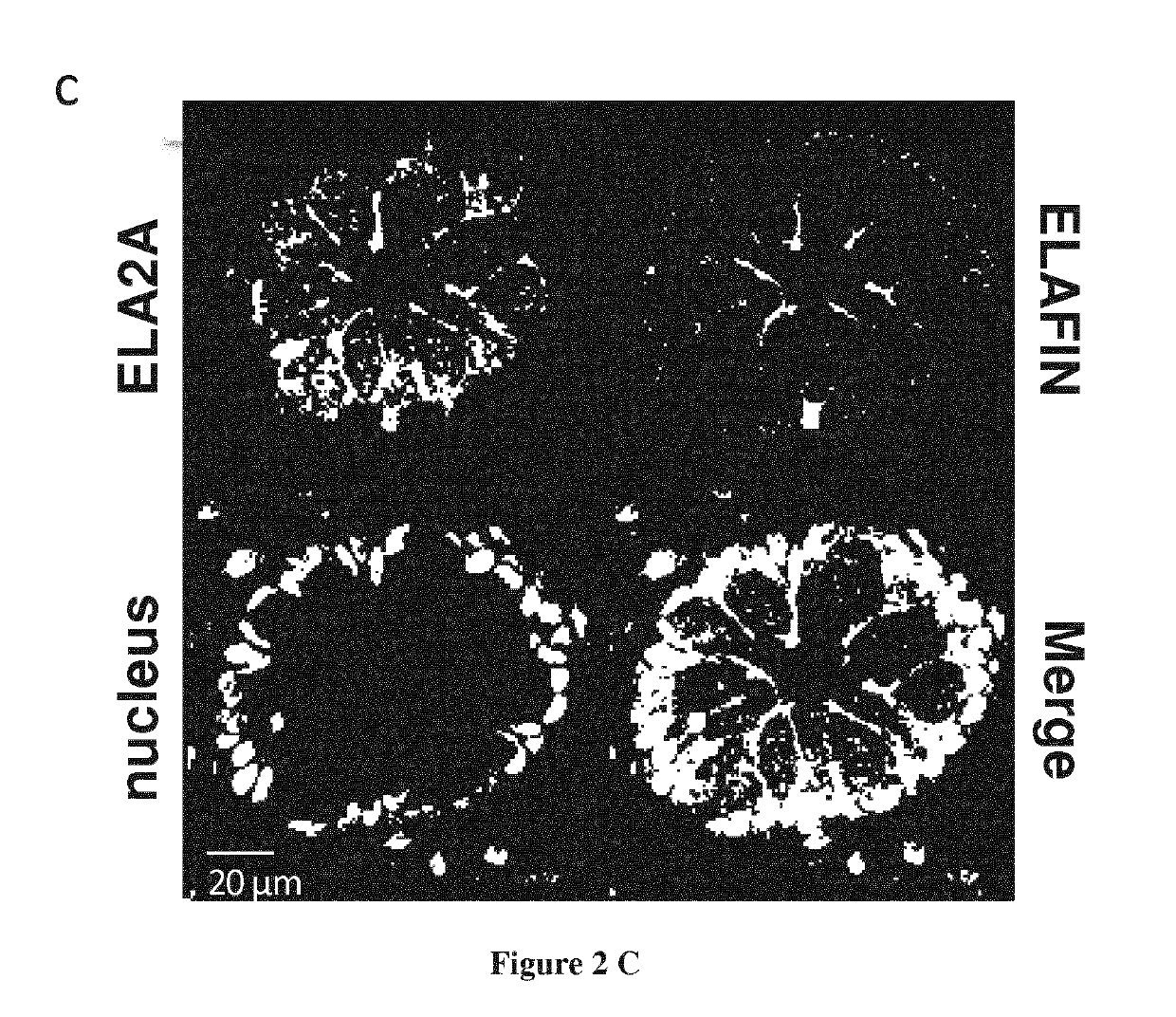Method of treatment of gut inflammatory diseases such as inflammatory bowel diseases (IBD) or irritable bowel syndrome (IBS)
a gut inflammatory disease and inflammatory bowel disease technology, applied in the field of gut inflammatory disease therapy, can solve the problems of elastolytic activity and inability to rule out, and achieve the effect of enhancing ela2a expression
- Summary
- Abstract
- Description
- Claims
- Application Information
AI Technical Summary
Benefits of technology
Problems solved by technology
Method used
Image
Examples
example 1
& METHODS
[0084]Patients
[0085]Human colonic tissues were obtained from individuals treated at the Centre Hospitalier de Toulouse (France). Biopsies were collected during colonoscopy procedures aimed at clinically evaluating the disease of established and well-characterized CD and UC patients or they were realized in individuals undergoing colon cancer screening who were otherwise healthy (here, healthy controls). The written and verbal informed consent was obtained before enrolment in the study, and the Ethics Committee approved the human research protocol (ClinicalTrials.gov Identifier: NCT01990716). Clinical information on the patients is compiled in supplementary table 1.
[0086]Fresh biopsies were rinsed in isotonic sterile Hanks' balanced salt solution (HBSS) and were then immediately incubated in 2 ml HBSS at 37° C. for 1 hour. Isolated biopsy specimens were embedded in optimal cutting temperature (OCT) compound (Dako) at −186° C. and stored for in situ elastolytic activity.
[0087...
example 2
[0123]Elastase Activity is Detected in Intestinal Epithelial Cells
[0124]Considering the increased elastolytic activity detected in colons of IBD patients both in inflamed and non-inflamed parts of the tissues, we investigated the cellular source of elastolytic activity in human colons using in situ zymography. Within the gut section from healthy individuals, elastase activity was detected in the epithelium only (FIG. 1a). In colonic tissue slices from Crohn's disease (CD) patients taken in inflammatory areas, elastolytic activity was largely increased compared with tissues from otherwise healthy controls (FIG. 1a). The strongest activity was still localized in epithelial cells. To a lesser extend, elastolytic activity was also present in the submucosa of CD inflamed tissues, associated with infiltrated granulocytes. In non-inflamed colonic mucosa from IBD patients, epithelial cells also represented the main source of elastolytic activity and the intensity was similar to that observe...
example 3
[0156]As shown in FIG. 8, ELA2 over-expressing intestinal epithelial cells increase the release of CXCL8 protein compared to control cells (performed by ELISA).
[0157]The increased CXCL-8 protein release observed in ELA2A Tg cells (cells overexpressing ELA2A) is inhibited by ELAFIN addition to the culture, in a dose-dependent manner (FIG. 9).
[0158]ELA2A specific inhibition by ELAFIN is able to bring the CXCL8 protein release in ELA2ATg cells to the level of control wild-type cells.
[0159]In that case the inhibition by ELAFIN can be considered as a specific inhibition of ELA2A since:[0160]only ELA2A production is changed between wild type control cells and ELA2A Tg cells[0161]the other proteases inhibited by ELAFIN (proteinase-3 and neutrophil elastase) are not secreted or produced by intestinal epithelial cells.
PUM
| Property | Measurement | Unit |
|---|---|---|
| humidity | aaaaa | aaaaa |
| humidity | aaaaa | aaaaa |
| concentrations | aaaaa | aaaaa |
Abstract
Description
Claims
Application Information
 Login to View More
Login to View More - R&D
- Intellectual Property
- Life Sciences
- Materials
- Tech Scout
- Unparalleled Data Quality
- Higher Quality Content
- 60% Fewer Hallucinations
Browse by: Latest US Patents, China's latest patents, Technical Efficacy Thesaurus, Application Domain, Technology Topic, Popular Technical Reports.
© 2025 PatSnap. All rights reserved.Legal|Privacy policy|Modern Slavery Act Transparency Statement|Sitemap|About US| Contact US: help@patsnap.com



